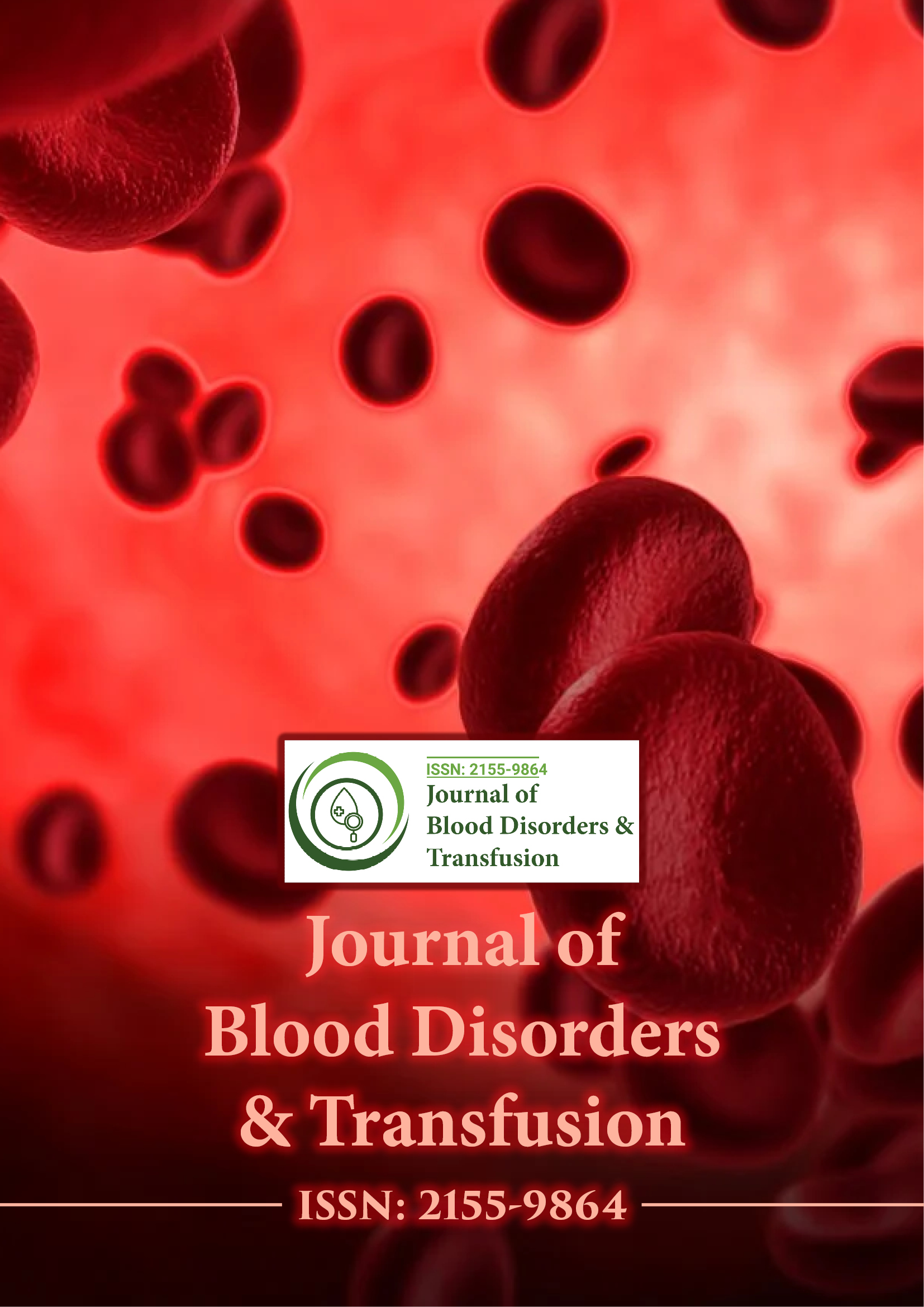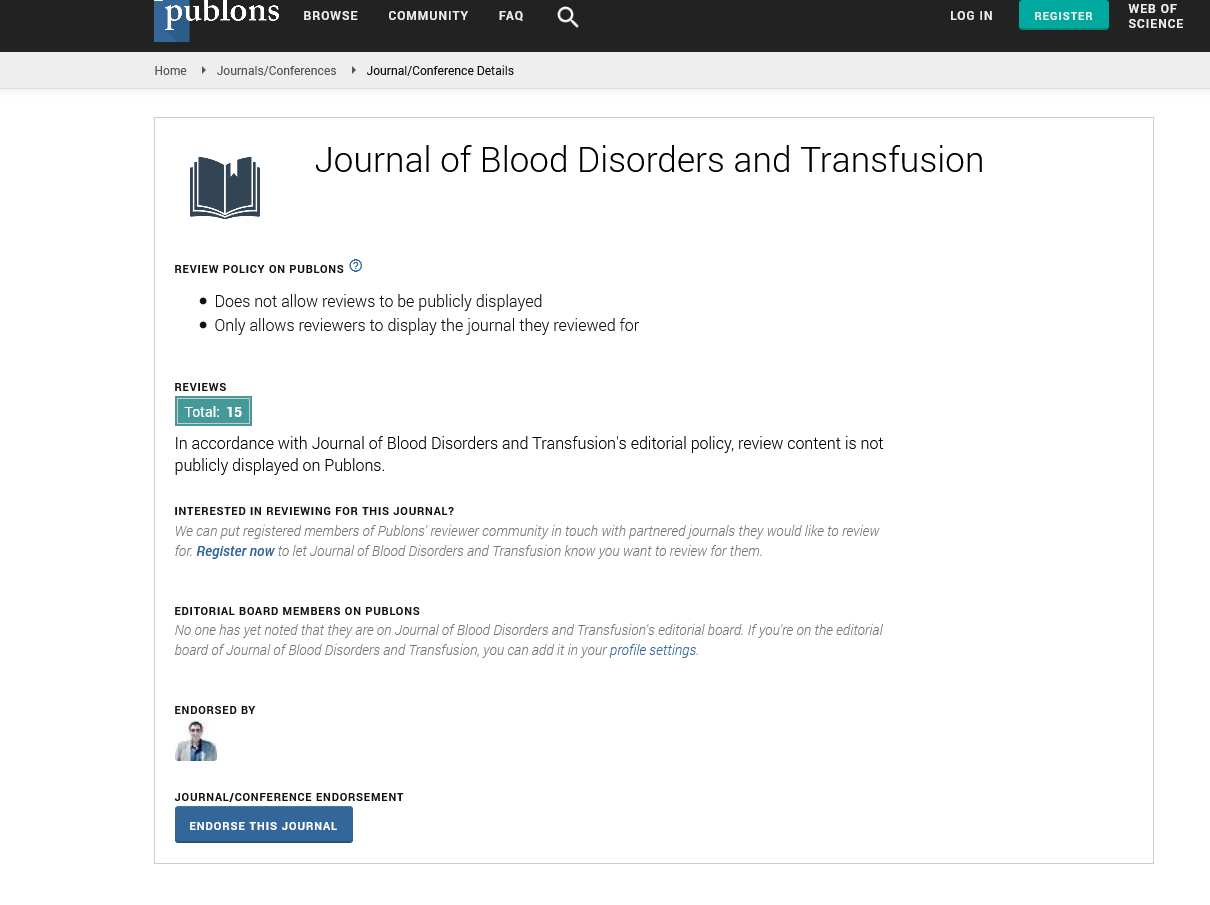Indexed In
- Open J Gate
- Genamics JournalSeek
- JournalTOCs
- Ulrich's Periodicals Directory
- RefSeek
- Hamdard University
- EBSCO A-Z
- OCLC- WorldCat
- Proquest Summons
- Publons
- Geneva Foundation for Medical Education and Research
- Euro Pub
- Google Scholar
Useful Links
Share This Page
Journal Flyer

Open Access Journals
- Agri and Aquaculture
- Biochemistry
- Bioinformatics & Systems Biology
- Business & Management
- Chemistry
- Clinical Sciences
- Engineering
- Food & Nutrition
- General Science
- Genetics & Molecular Biology
- Immunology & Microbiology
- Medical Sciences
- Neuroscience & Psychology
- Nursing & Health Care
- Pharmaceutical Sciences
Graft-versus-GVHD, a second transplantation from another donor for the rescue from refractory acute GVHD
2nd International Conference on Hematology & Blood Disorders
September 29-October 01, 2014 DoubleTree by Hilton Baltimore-BWI Airport, USA
Kazuhiro Ikegame, Yuki Taniguchi, Satoshi Yoshihara, Katsuji Kaida, Kyoko Taniguchi, Shinichi Ishii, Takayuki Inoue, Ruri Kato, Masaya Okada, Hiroya Tamaki, Tatsuya Fujioka, Toshihiro Soma and Hiroyasu Ogawa
Scientific Tracks Abstracts: J Blood Disorders Transf
Abstract:
Background: GVHD is still a major obstacle in allogeneic transplantation despite the progress of immunosuppressive drugs and cell therapy such as mesenchymal stem cells. GVHD is caused by donor lymphocytes, mainly T cells, attacking various host tissues. A concept of Graft-versus-autoimmunity (GVA), on the other hand, is suggested from the fact that autoimmune diseases are ameliorated by allogeneic transplantation for accompanying hematologic disorder. GVHD can be thought as a typical autoimmune disease caused by donor T cells. First, we had an experience of the autologous (recipient cells) transplantation for severe GVHD, which induced successful control of GVHD, but resulted in disease relapse probably due to cancelling the GVL effect. Learning from this case, we have pursued the possibility of rescue transplantation from another donor for refractory acute GVHD in a murine model and in a clinical trial. Methods: In a murine GVHD model of BDF1 (H-2b/d) to B6C3F1 (H-2b/k), GVHD mice underwent a second BMT from B6B10F1 (H-2b/s) following low-dose TBI two to three weeks after first BMT. In a clinical trial, 16 patients who developed severe acute GVHD, refractory to three to five lines of GVHD-specific treatments, underwent allogeneic stem cell transplantation using reduced-intensity conditioning regimens with grafts from a second donor. Results: In the murine model, GVHD was successfully treated by a second BMT, in which an achievement of full second-donor chimerism was required. The mice were relatively resistant to new development of GVHD derived from second-donor grafts. The timing of the second BMT, the intensity of conditioning, and donor selection could be important. In the clinical trial, among 15 transplantations that could be evaluated, rescue donor grafts were engrafted in 11 cases and rejected in 4 cases. For patients who achieved second donor engraftment, the response rate was 90% (CR 8, PR 2, stable 1). 6 of 8 patients with CR survived without GVHD symptoms, with a median follow-up of 5.8 years. New development of GVHD by the second graft was not observed. In contrast, all patients who rejected rescue donor grafts died from GVHD or GVHD-related complications. Conclusions: GVHD could be treated by transplantation using second donor graft, which could eliminate first donor lymphocytes in the murine model and the clinical trial. We would like to propose a novel concept of Graft-versus-GVHD, on the analogy of GVA.
Biography :
Kazuhiro Ikegame is an Assistant Professor, Division of Hematology, Department of Internal Medicine in Hyogo Medical College. He is associated with Japan Society of Internal Medicine, Japan Society of Hematology, Japan Society of Hematopoietic Stem Cell Transplantation, Japan Society of Transfusion and Cell Therapy, Japan Society of Immunology and Japan Society of Rheumatology. His research topics include Hematopoietic Stem Cell Transplantation (HLA-mismatched Transplantation, Cord Blood Transplantation) and his areas of interest are Transplantation Immunology, Tumor Immunology and Autoimmunity. He has published many articles regarding his research work.

